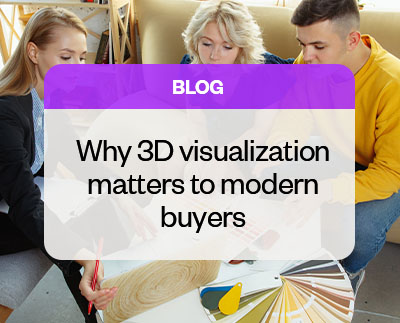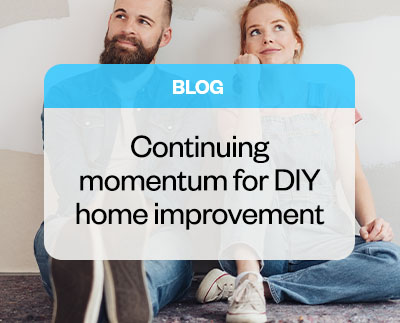
Over the course of the past couple of years, there have been three buyer personas that have emerged and really pushed along the massive growth that the home improvement and home remodeling space has seen. These buyers have taken advantage of the extra time they had during the pandemic and the shift to remote work to dive head first into home improvement projects.
In addition to their desire to improve and beautify the home spaces they spend so much time in – the kitchen, the living room, the bathroom, the home office, etc. – they also share in their approach of the planning stage, before any demolition or repainting starts. An expectation has grown that home renovators will be able to work online to investigate their options, try out different furnishings, and see how different things look in the area they’re renovating or building.
While some have maintained simple online tools, what really sets brands, retailers and designers apart is the availability of 3D visualization tools. These tools can do more than simply let home remodelers see what a piece of furniture looks like in different colors. These tools allow a remodeler to truly take a room in their home and add or subtract items from it virtually, to see what the results of a project would look like.
Understanding the buyer
While all home remodeling and renovation audiences have grown to appreciate the usefulness of 3D visualization tools, there are different features that resonate more with different buying personas. It pays to understand each audience so you can ensure your 3D visualization tools meet the specific needs of the personas most likely to buy from you.
The three buying personas that have emerged are Do-It-Yourself (DIY), Do-It-With-Me (MIWM) and of course, Do-It-For-Me (DIFM). There will always be variations on those themes, but for now let’s stick to these three.
Do-It-Yourself (DIY)
Do-It-With-Me (DIWM)
Do-It-For-Me (DIFM)
For our third type of buyer, all preparation and planning is started and completed entirely by a designer, expert, craftsman or salesperson. This type of buyer either doesn’t feel they have the skills or the time to design, develop and build, remodel, or redesign their homes. They are the type of buyer that seeks out trusted experts every step of the way. They have a general idea of what they’re looking for, but want to trust an expert in the field to take the project from A to Z, only asking them to approve aspects of it, not to design it or purchase goods. The opportunity here is to gain the trust of a DIFM and build a relationship that lasts through any and all home projects they undertake.
So now that we have some insight into the buyer personas we’re dealing with, the question is how do 3D visualization tools help each type to move forward with a home renovation or remodeling project? What types of 3D technologies should you offer to cater to these audiences?
3D visualization tools
3D tools have become increasingly important as a part of the experience you offer customers and potential buyers, regardless of whether you’re a retailer, manufacturer or expert designer. You want to give the consumer the ability to see, in life-like 3D, what their idea could look like in their home. You want them to be able to virtually test out different types of furniture or equipment, and decide what they like best.
Obviously, you’re not going to want to set up the online portion of your business with three different tools - one for each persona. You are, however, going to want to make sure that the tool you use and the experiences you enable for buyers are able to satisfy the needs of each of these distinct audiences.
Competitive advantage
3D tools can help with color, location, size - you name it. By incorporating 3D visualization technology into your site, you enable buyers of all personas to see what an idea looks like, and then either get started from that idea, or share it with experts in order to collaborate, improve, refine and come up with a finished product. The bottom line is that 3D technology is becoming more of an expectation than a nice-to-have, and with the ability for it to be sticky and land you a qualified buyer, ready to go through the purchasing journey with you, you better invest in it, or your competitors will.
Want more content?
Delivering an omnichannel buying experience
Related posts
Share this Post





